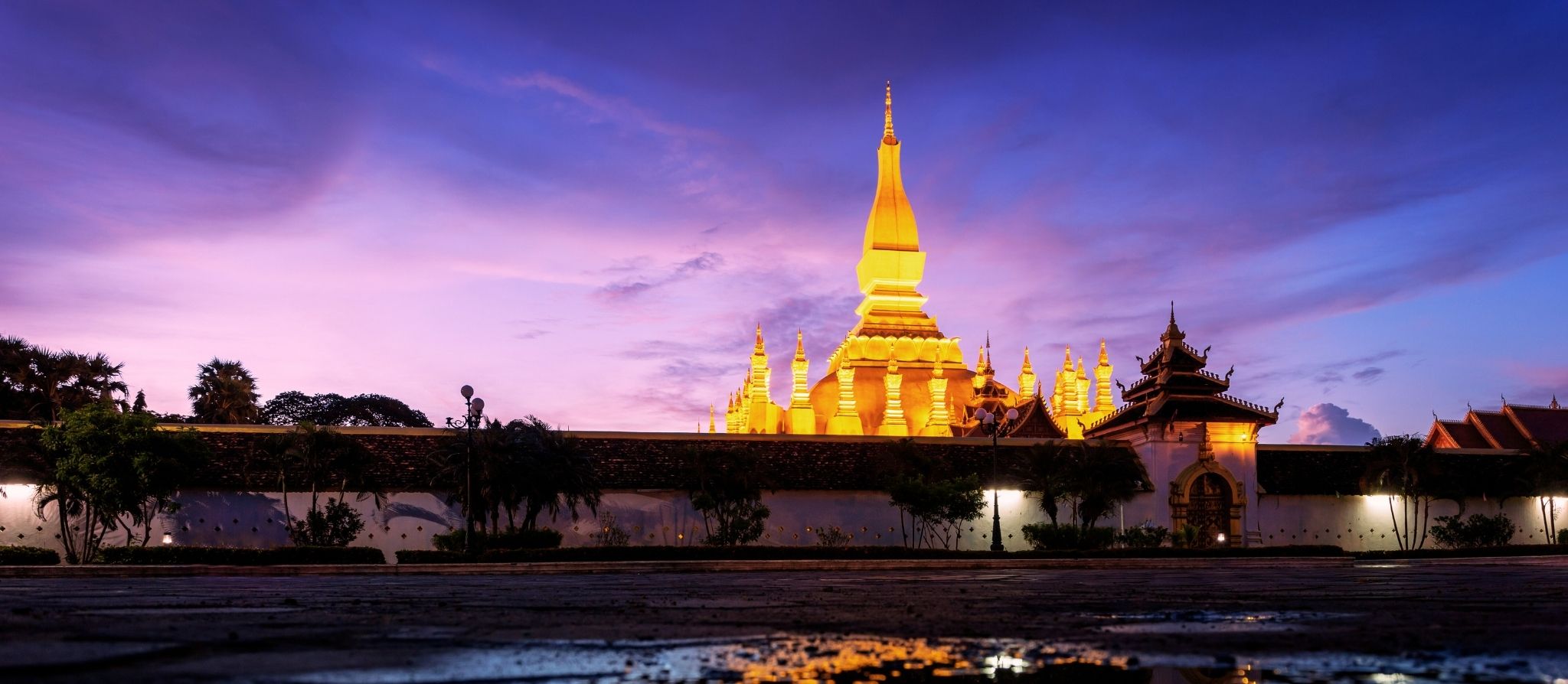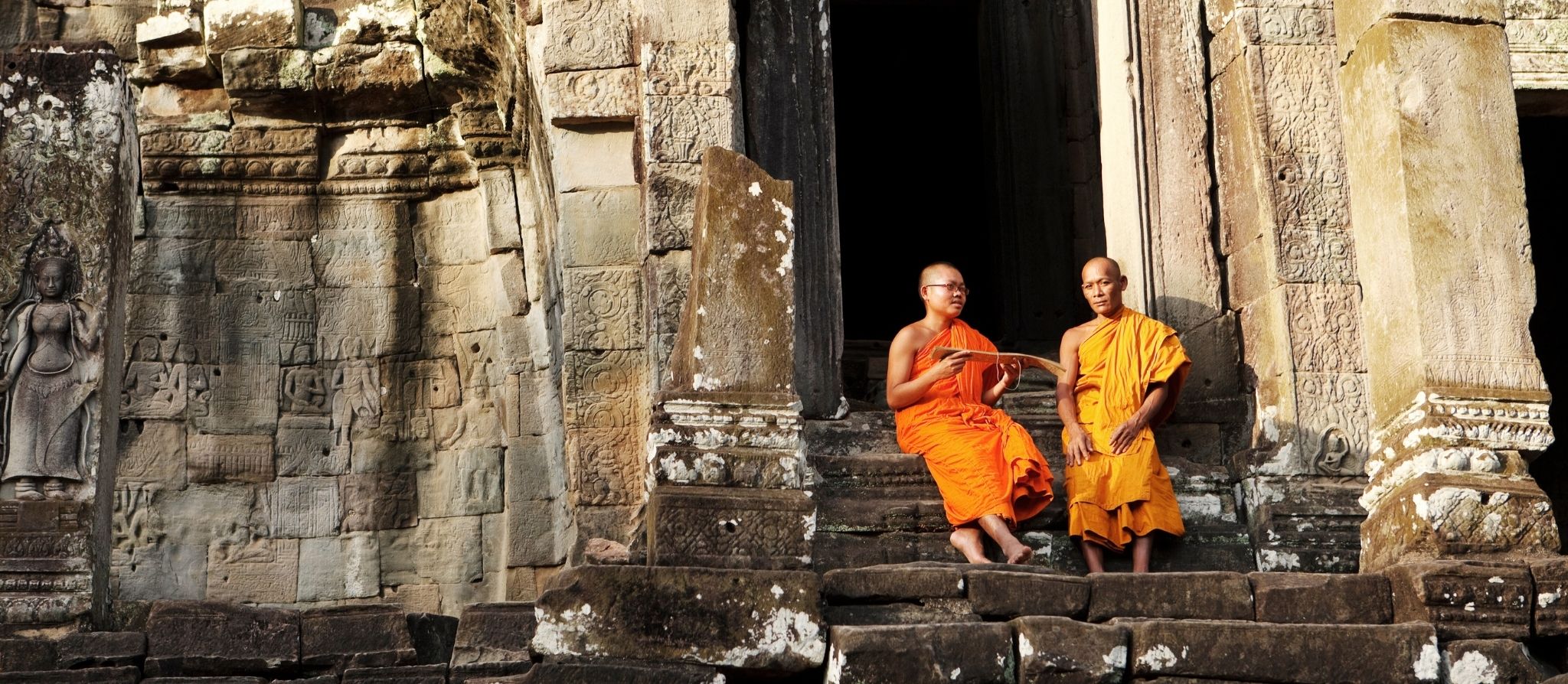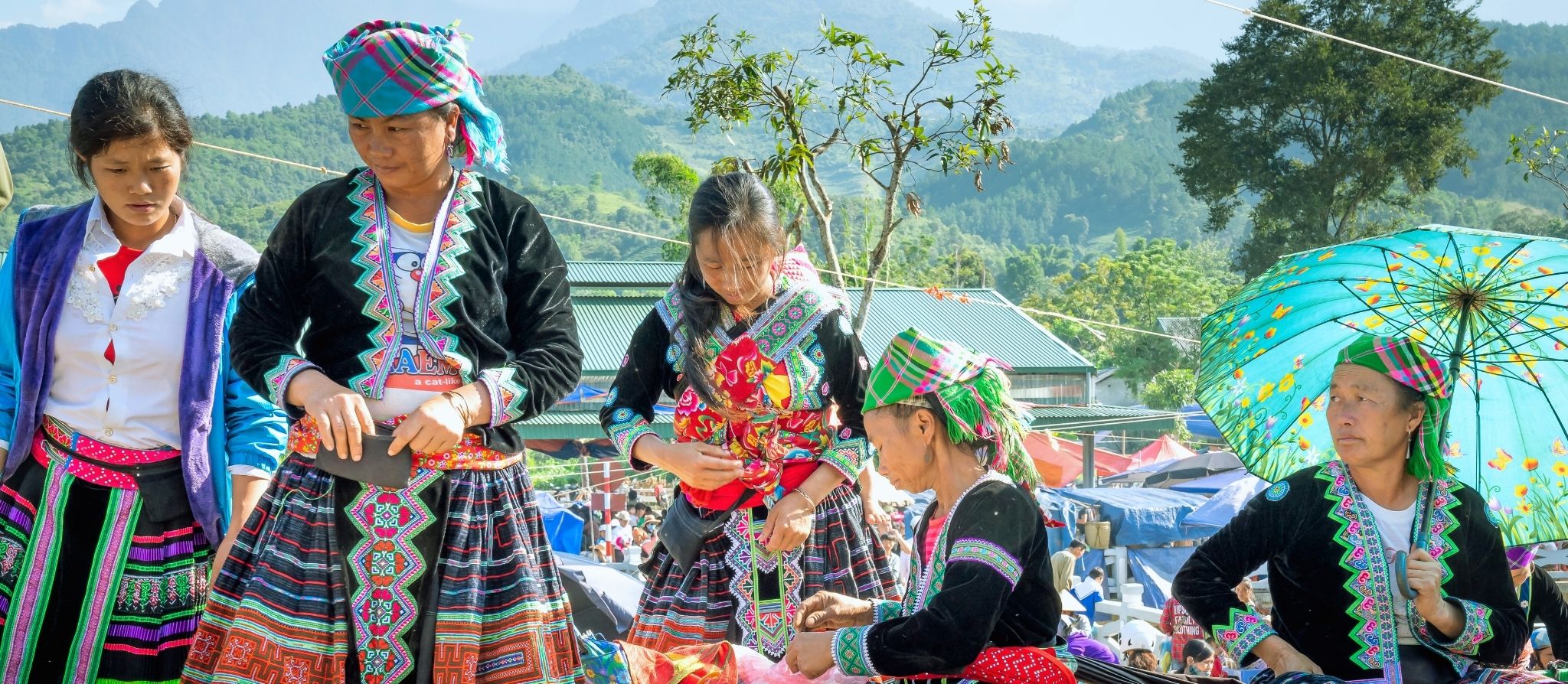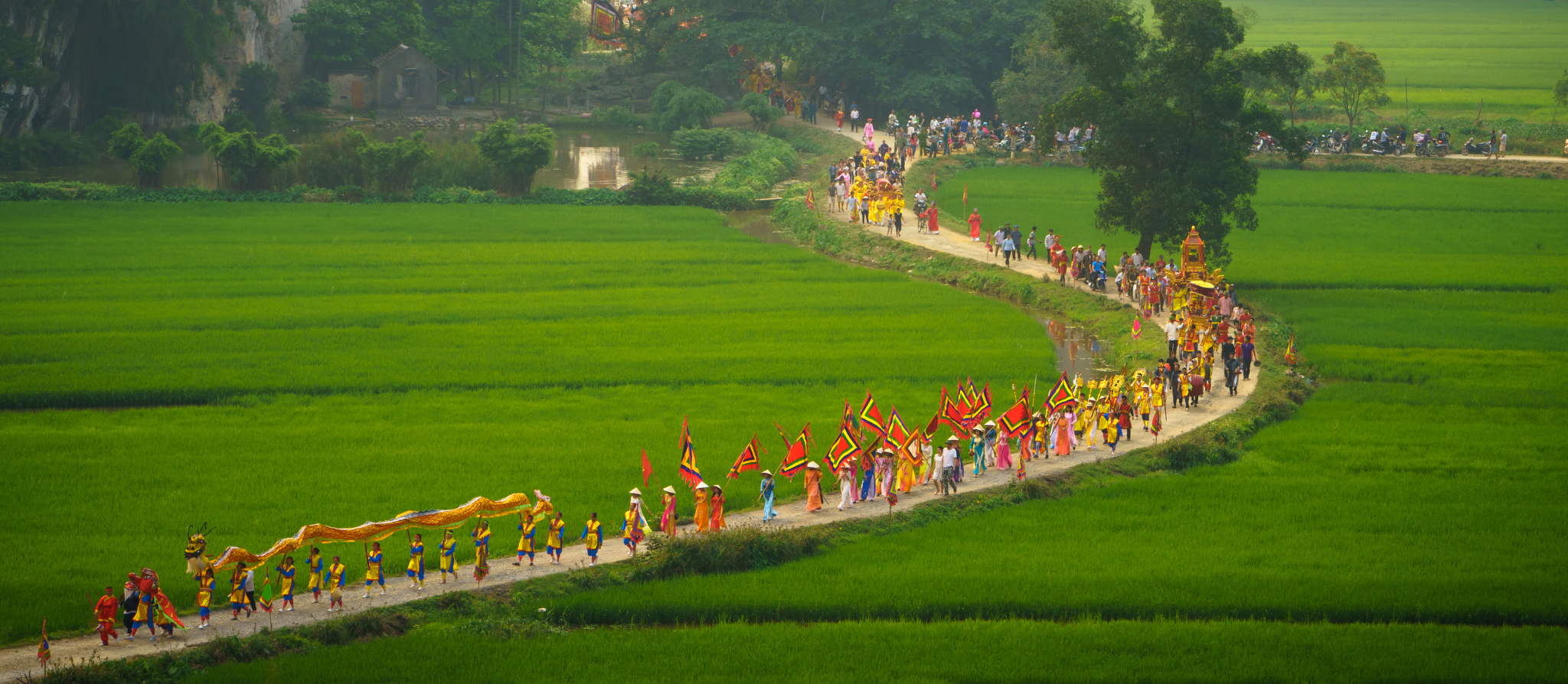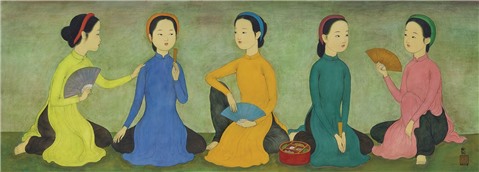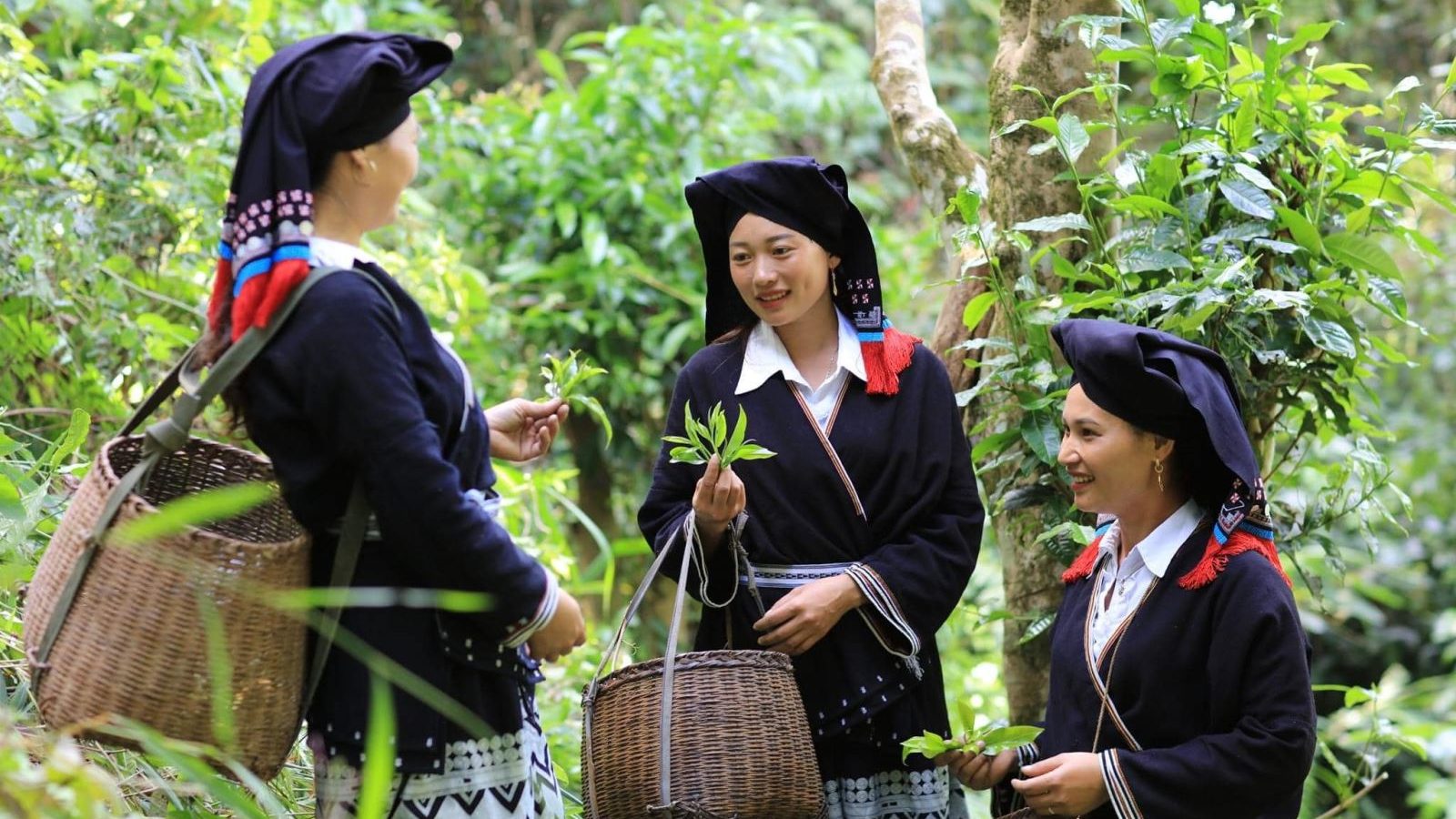“Ao Dai” is a proud traditional costume and national cultural symbol of Vietnam. Though several centuries, the Ao Dai have had the characteristic to suit the life for each period, complementing the charm and femininity of Vietnamese women. People don’t know the exact time the “Ao Dai” was used for the first time, but it has been confirmed that Vietnamese Ao Dai has appeared for a long time. Originating from the Cross-collared robe, under many historical periods, Ao Dai has innovated and improved to serve the needs of dress, convenient in labor and beauty. By the 60s of the 20th century, long dresses were gradually shaped and renewed ever since.
1. Cross-collared robe
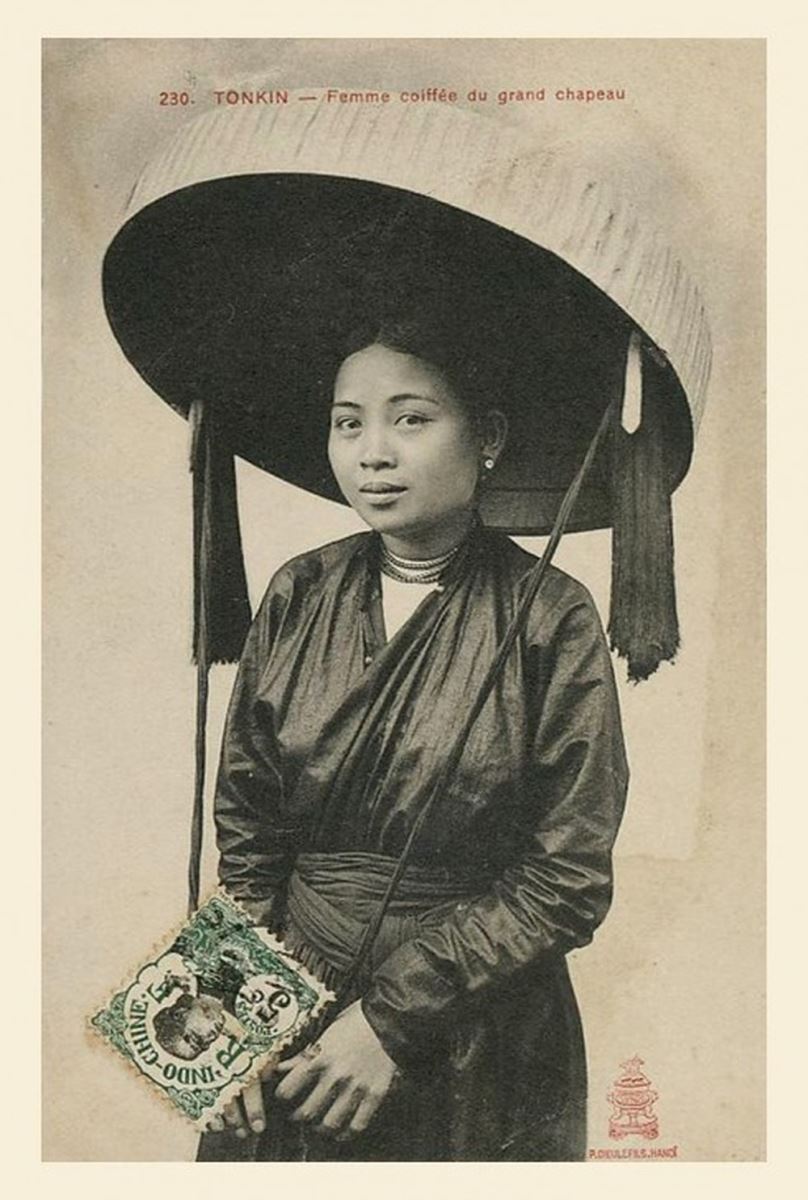
The Cross-collared robe was the most primitive style of Vietnamese Ao Dai. It had 2 big size side slits, long sleeve, wide cuff, and long shirt body. The shirt body was made of 4 garments, worn outside the “Ao Yem” (one type of bra or camisole), and fitted with a black skirt and a dark belt. The cross-collared robe was the same as the four-part dress, except the cross-collared robes let 2 front laps free and were not tied.
2. Four-Part Dress
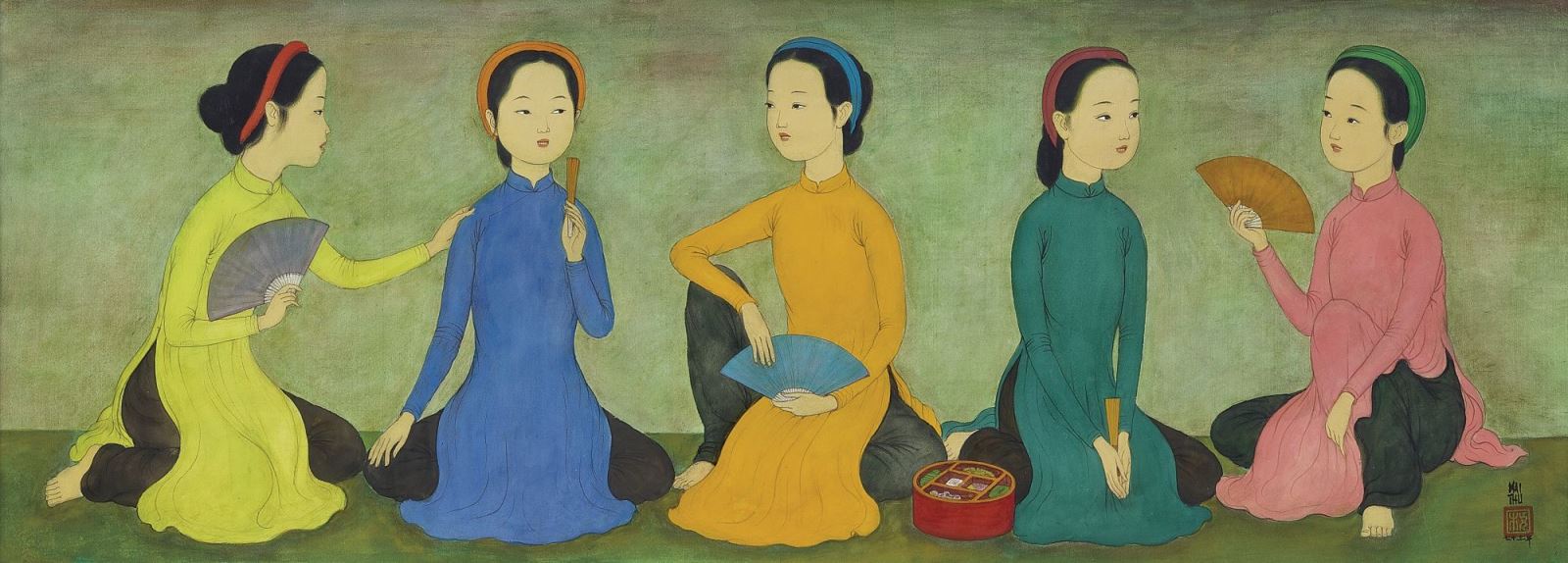
The four-part dress was born around 1645. The loom did not weave large fabric so the pieces of fabric were sewn together to form a four-part dress. The four-part Dress was covered by brown color, had no buttons, was let to be free or was tied when working in the fields. Inside, women wore a dark colored bra for older women or white, red, peach flower color for girls. In addition, outside” Ao Yem” they also wore a short white blouse and tied blue long silk strips between blouses and the black skirt waistband.
Supposed as a rustic long dress, the modest four-piece dress also carried in itself a unique meaning, symbolizing the parents of the couple. Along with the Kerchief, the ponytail and the “Quai Thao” hat, the four-body shirt helped people recall the image of the beauty of women in the past.
3. The Five-part dress
By the time of Gia Long’s reigned (1802-1819), a five-part dress was made on the basis of the four-body dress, but had a small body to symbolize the class and social status of the wearer. High-class aristocracy wore a five-body dress to distinguish them from the poor class.
The five-part dress consisted of two pieces of fabrics that were sewn into a discreet frontal shirt body, with a sub-body on the right side. The dress had a wide neck and large size and prevailed until the beginning of the 20th century. The four outside laps symbolized the parents of the couple, and the fifth lap symbolized the wearer. The five-part dress had 5 buttons to show the morality of Vietnam’s people in terms of Kindness, Decorum, Uprightness, Wisdom, and Faithfulness. At this time there was also a fluctuation in the body length of the dress
4. The“Le Mur” Ao Dai – the “Le Pho” Ao Dai
Lemur Ao Dai was transformed from a five-part dress and is the first contemporary of Ao Dai version in Vietnam. Le Mur Ao Dai was created by an artist named Cat Tuong in 1938. In the style of Le Mur, Ao Dai only has 2 laps front and back, the lap has floor-length to create flexibility in walking. The Le Mur was not “faithful” with the traditional style, it had a curved lap in order to add graceful and sexy looks. On a Le Mur Ao Dai, there are many details of Europeanization such as covered waist, shoulder straps, a Western-style collar, right side buttons and sleeves … and it was worn with flared trousers. Only the modern-style artists dared to wear Le Mur’s Ao Dai. Until 1943 this style of dress was gradually forgotten.
From Ao Dai Le Mur, Le Pho cleverly created a new Ao Dai version that combines a four-part dress and Le Mur Ao Dai. Le Pho Ao Dai style was designed to remove the highlights of the collar and sleeves. The flaps were long, closed collar, buttons on the right, and curved flaps, 2 flaps were free to follow each step. Le Pho Ao Dai was made of colored cloth with white flared trousers, and this style was loved and worn by Vietnamese women during many periods.
5. Raglan long dress.
Raglan Ao Dai appeared in the 1960s and was created by Saigon’s Dung Đakao tailor with the differences in how the raglan sleeves connect to the shirt body. The sleeve was sewn from the neck to the armhole with an angle of 45 degrees. The front and back laps were connected with buttons from the neck to the armpits and along one side.
Compared to the previous type of Ao Dai, Raglan Ao Dai no longer had creases in the armpits and shoulders; it was tighter and helped women move their hands comfortably and flexiblely. Ao Dai was worn with slanted pants sewn in a soft fabric, curved hips, and legs that were length until the ankles. Raglan Ao Dai contributed to shaping the style of Vietnamese Ao Dai in both designs and innovations later.
6. Lady Nhu’s Ao Dai (Ao Dai Tran Le Xuan)
In 1968, the Ao Dai were again improved, changed in the design of Mrs. Tran Le Xuan, wife of Ngo Dinh Nhu. She promoted Vietnamese Ao Dai in most meetings with foreigners, parties, hang out … This was a design that had Byron collar and boat neckline, which is inspired by the stature of unmarried Khmer women.
Initially, this style of Ao Dai also met the opposition of many people because it was against the traditional customs of the society at that time. But later, Lady Nhu’s Ao Dai was praised for being simple, delicate, helping people to wear comfortable, suitable for the tropical climate and to enhance the traditional and modern beauty of women.
7. Mini Ao Dai, Ao Dai “chit to”
The style of Ao Dai “chit eo” (tight at the waist) appeared during 10 years (1960-1970). This time, the use of bras was popular, especially for urban women. At this time, these styles were popular because they help show sexy body curves.
In the late 1960s, Mini Ao Dai was popular with Saigon schoolgirls for comfort and convenience. The laps were narrow and short; length to the knee, the shirt body was big and not tight at the waist, but still tailoring the body.
8. Modern Ao Dai (From1970 to present)
Today, we can find the Ao Dai in many different designs, materials, from traditional to breaking style, from silk to chiffon, brocade … Moreover, the Ao Dai has been also turning into a wedding dress, the Mini Ao Dai was worn with jeans. But no matter how transformed, the Ao Dai retains its charm, flexibility, soul, and both sexy and discreet. Every time people mention the Ao Dai, they will remember the image of elegant white long dress of Ha Thanh (Tonkin) women, the gracefulness and tenderness of Hue’s girls in purple – colored Ao Dai, and the dynamic youthfulness of the Saigon women in unique Ao Dai with varied colors.



